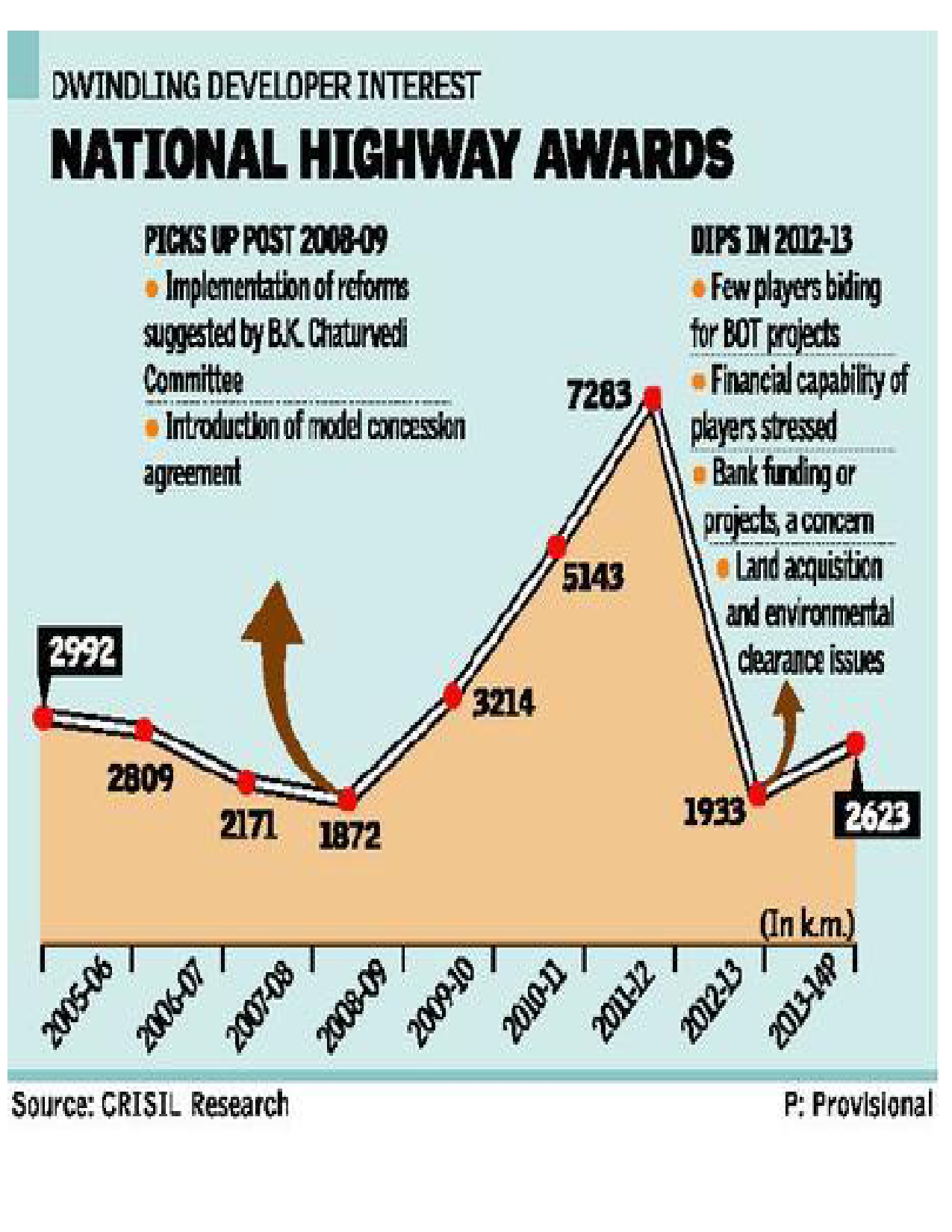BOT projects hit speed-bump
August 13, 2013

Plagued by the weak financial position of players, delays in project clearances and low estimated traffic density for many stretches on offer, BOT (build-operate-transfer) projects in the roads sector have hit a roadblock and severely dented the pace of development of road infrastructure in the country.
Dwindling developer interest in BOT road projects is mirrored in the fact that awarding for national highway projects slowed to an eight-year low of 1,933 km in 2012-13 (this includes awarding both by National Highways Authority of India and the Ministry of Road Transport & Highways).
Financial position
The financial condition of many players in the sector is so precarious that the situation is unlikely to improve drastically in the current year. We expect nearly 2,600 km of awarding in 2013-14; nearly 50 per cent of this will be part of Phase IV, which mostly involves low traffic density stretches.
Pertinently, most of the projects will be awarded on EPC (engineering, procurement and construction) basis, not BOT.
It is not just awarding that has suffered in the past year or so; project execution too has taken a beating. During 2011-12, awarding hit a 9-year high of 7,283 km, however, at least 25 projects involving 3,300 km of roads are currently stalled.
Of these 25 projects, about 60 per cent are held up due to land acquisition or environmental clearance issues while the rest are stuck due to the inability of companies to achieve financial closure. We don’t see things on the ground changing swiftly; project execution will remain flat around 3,500 km during 2013-14 also.
This slump in attractiveness of BOT projects is largely the outcome of aggressive bidding by developers a couple of years ago. Projects awarded in 2011-12 faced delays in achieving financial closure as many players had bid aggressively by quoting a huge premium amount, based on highly optimistic road traffic density estimates that have not subsequently fructified. These aggressive bids lowered the viability of these projects.
Consequently, the gearing of many players is now very high due to a sizable portfolio of BOT projects under implementation; average gearing in companies in roads-BOT segment is 3.1 times as of 2012-13. Saddled with such high gearing, players have limited financial flexibility to bag more BOT projects. This was compounded by NHAI’s offer of relatively less attractive road projects in 2012-13, where traffic density, and thus, potential to make good returns was lower. The net result was a poor turnout of players for bidding.
Bank funds
Today, obtaining funds from banks is an even more arduous task for developers. Banks have become more cautious while lending to road projects since many of them are approaching their sectoral exposure limit towards the roads sector. In addition, banks are trying to ensure that land acquisition does not cause delays in the project.
Therefore, they are demanding that 80-100 per cent of the land be available with the developer at the time of awarding (typically, 40-50 per cent land is made available by NHAI at the time of awarding).
Many projects faced delays in getting environmental clearance and forest clearance, which added to the players’ discomfort and discouraged them from bidding for new projects. In the recent past, GMR and GVK filed for termination of two large BOT projects (awarded in 2011-12) citing delays in the allotment of land and clearances from NHAI.
The fall from favour of BOT projects among developers has left NHAI with little choice but to award more projects through the EPC route. EPC projects entail limited upfront capital requirement and lower risk compared to BOT projects, so player interest in them will remain high.
EPC route
Over the next 12-18 months, we expect most of the road projects to be awarded through the EPC route. This will boost the share of EPC projects in total investments to about 40 per cent in the next five years from 28 per cent in the past five years.
For the BOT road projects to pick up, funding availability needs to improve. While the government has tried to address this through steps such as relaxation of exit norms, in the current scenario these measures may not be enough. Developers on their part need to actively look at stake sale in operational BOT projects and at the same time look at equity infusion. While the implementing body and the project developers look at course correction, the road to recovery is expected to be some way off. Over the next couple of years both awarding as well as implementation is expected to remain subdued.
source: http://www.thehindu.com






